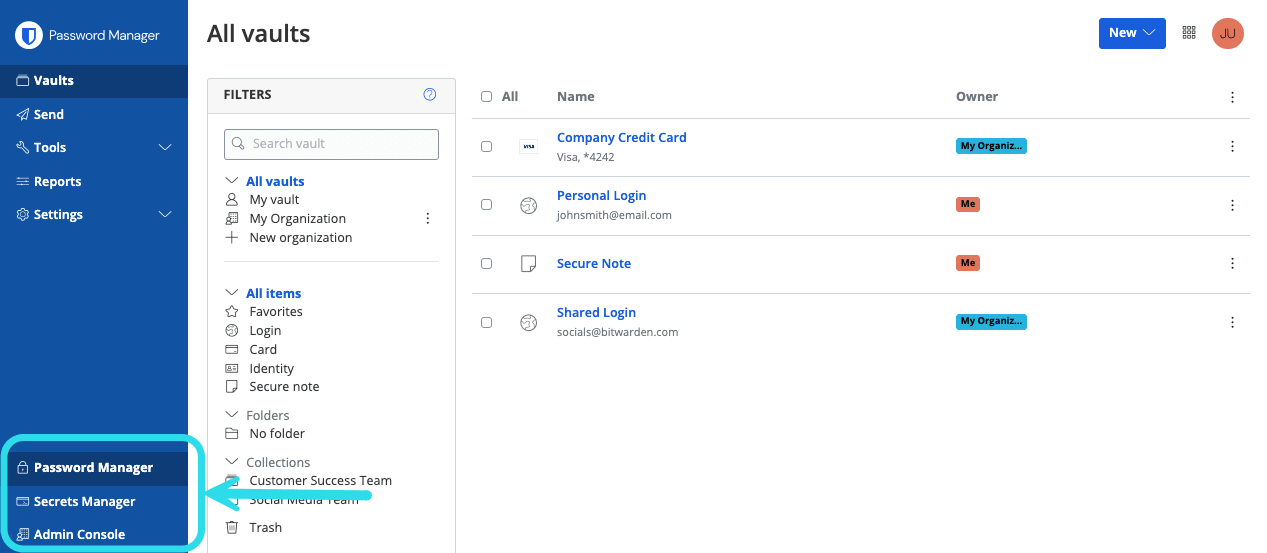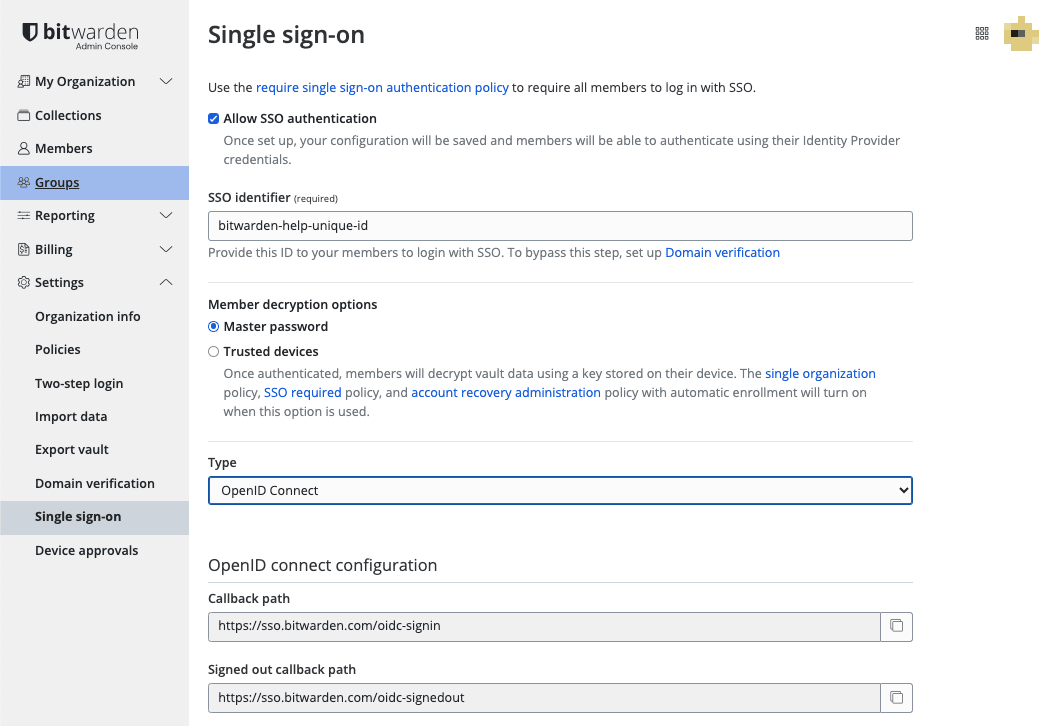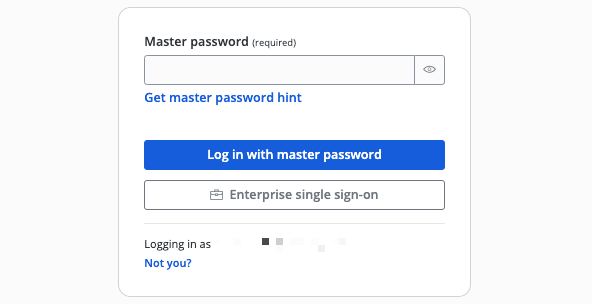ADFS OIDC Implementation
This article contains Active Directory Federation Services (AD FS)-specific help for configuring login with SSO via OpenID Connect (OIDC). For help configuring login with SSO for another OIDC IdP, or for configuring AD FS via SAML 2.0, see OIDC Configuration or ADFS SAML Implementation.
Configuration involves working simultaneously within the Bitwarden web app and the AD FS Server Manager. As you proceed, we recommend having both readily available and completing steps in the order they are documented.
Log in to the Bitwarden web app and open the Admin Console using the product switcher:

Select Settings → Single sign-on from the navigation:

If you haven't already, create a unique SSO identifier for your organization. Otherwise, you don't need to edit anything on this screen yet, but keep it open for easy reference.
tip
There are alternative Member decryption options. Learn how to get started using SSO with trusted devices or Key Connector.
In Server Manager, navigate to AD FS Management and create a new application group:
In the console tree, select Application Groups and choose Add Application Group from the Actions list.
On the Welcome screen of the wizard, choose the Server application accessing a web API template.

AD FS Add Application Group On the Server application screen:

AD FS Server Application screen Give the server Application a Name.
Take note of the Client Identifier. You will need this value in a subsequent step.
Specify a Redirect URI. For cloud-hosted customers, this is
https://sso.bitwarden.com/oidc-signinorhttps://sso.bitwarden.eu/oidc-signin. For self-hosted instances, this is determined by your configured Server URL, for examplehttps://your.domain.com/sso/oidc-signin.
On the Configure Application Credentials screen, take note of the Client Secret. You will need this value in a subsequent step.
On the Configure Web API screen:

AD FS Configure Web API screen Give the Web API a Name.
Add the Client Identifier and Redirect URI (see step 2B. & C.) to the Identifier list.
On the Apply Access Control Policy screen, set an appropriate Access Control Policy for the Application Group.
On the Configure application permissions screen, permit the scopes
allatclaimsandopenid.
AD FS Configure Application Permissions screen Finish the Add Application Group Wizard.
In Server Manager, navigate to AD FS Management and edit the created application group:
In the console tree, select Application Groups.
In the Application Groups list, right-click the created application group and select Properties.
In the Applications section, choose the Web API and select Edit... .
Navigate to the Issuance Transform Rules tab and select the Add Rule... button.
On the Choose Rule Type screen, select Send LDAP Attributes as Claims.
On the Configure Claim Rule screen:

AD FS Configure Claim Rule screen Give the rule a Claim rule name.
From the LDAP Attribute dropdown, select E-Mail-Addresses.
From the Outgoing Claim Type dropdown, select E-Mail Address.
Select Finish.
At this point, you have configured everything you need within the contest of the AD FS Server Manager. Return to the Bitwarden web app to configure the following fields:
Field | Description |
|---|---|
Authority | Enter the hostname of your AD FS Server with |
Client ID | Enter the retreived Client ID. |
Client Secret | Enter the retrieved Client Secret. |
Metadata Address | Enter the specified Authority value with |
OIDC Redirect Behavior | Select Redirect GET. |
Get claims from user info endpoint | Enable this option if you receive URL too long errors (HTTP 414), truncated URLS, and/or failures during SSO. |
Custom Scopes | Define custom scopes to be added to the request (comma-delimited). |
Customer User ID Claim Types | Define custom claim type keys for user identification (comma-delimited). When defined, custom claim types are searched for before falling back on standard types. |
Email Claim Types | Define custom claim type keys for users' email addresses (comma-delimited). When defined, custom claim types are searched for before falling back on standard types. |
Custom Name Claim Types | Define custom claim type keys for users' full names or display names (comma-delimited). When defined, custom claim types are searched for before falling back on standard types. |
Requested Authentication Context Class References values | Define Authentication Context Class Reference identifiers ( |
Expected "acr" Claim Value In Response | Define the |
When you are done configuring these fields, Save your work.
tip
You can require users to log in with SSO by activating the single sign-on authentication policy. Please note, this will require activating the single organization policy as well. Learn more.
Once your configuration is complete, test it by navigating to https://vault.bitwarden.com, entering your email address, selecting Continue, and selecting the Enterprise Single-On button:

Enter the configured Organization ID and select Log In. If your implementation is successfully configured, you'll be redirected to the AD FS SSO login screen. After you authenticate with your AD FS credentials, enter your Bitwarden master password to decrypt your vault!
note
Bitwarden does not support unsolicited responses, so initiating login from your IdP will result in an error. The SSO login flow must be initiated from Bitwarden.
Suggest changes to this page
How can we improve this page for you?
For technical, billing, and product questions, please contact support